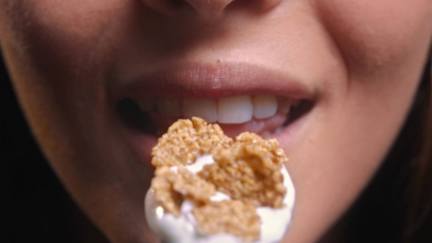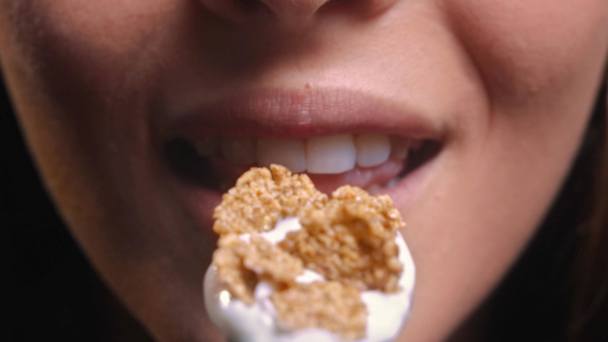
Exploring food texture properties and their definitions
Food texture is a critical aspect of our eating experience, influencing our perception of flavour, satisfaction, and enjoyment. It affects how we chew, swallow, and ultimately enjoy what we eat. For instance, the crunchiness of a snack can enhance its perceived freshness, while a smooth and creamy texture can be comforting and indulgent.
Textural diversity in food refers to the variety of textures we encounter, from the crunchiness of a fresh apple to the creaminess of a ripe avocado. Let’s explore the importance of textural diversity in food, its impact on our sensory experiences, and how different cultures embrace textural variety in their cuisines.
Texture in food development
For food developers, texture presents both challenges and opportunities. By manipulating structural elements, developers can create unique sensory experiences. For instance:
- Enhancing taste perception: Smooth textures can make foods seem richer, while chewy textures are often associated with sweet treats.
- Creating complexity: Combining multiple textures can increase perceived complexity, potentially enhancing consumer appeal.
- Influencing satiety: Foods with more intense textural characteristics (higher hardness, consistency, and heterogeneity) can lead to greater satiety, which has implications for weight management products.
For food scientists and developers, understanding and manipulating texture can be the key to creating innovative, appealing products that resonate with consumers. That’s where the Texture Analyser provides the ability to measure, compare and control textures that are created and then later manufactured.

So, let’s delve into other key texture terms and their meanings.
Textural definitions are not set in stone
The first thing to understand is that the name of the textural parameter or physical property changes depending upon the industry and sample being tested. Let’s take hardness for example:
Hardness is on the same scale as firmness and softness and is a common term when testing materials, confectionery or pharmaceutical products, whilst renamed as firmness when testing such products as fruit and vegetables and softness when related to bakery product properties.
Texture classification
Food textures are often classified into broad categories:
Crispy/Crunchy/Brittle: Foods that produce a rapid and audible fracture when bitten and quickly break apart It is often associated with fresh, raw vegetables, snacks like chips, and some types of bread crusts. Crispiness is similar to crunchiness but usually refers to thinner foods that produce a more delicate and brittle fracture. Crisp foods are often light and break into smaller, sharp pieces when bitten e.g. fried bacon, breakfast cereals.
Similarly, brittleness describes the ease with which a food breaks or shatters upon application of force. Brittle foods are often dry and break into sharp fragments.
Soft/firm: Foods that are easily deformed and require little force to chew (e.g., bread, ripe bananas). Firmness is the degree to which a food retains its shape and offers resistance to compression. Firm foods are solid and provide noticeable resistance to biting but do not necessarily require prolonged chewing.
Chewy: Foods that have a dense, resilient structure that provides resistance when bitten and require prolonged mastication before swallowing (e.g., gummy candies, caramel). Chewiness describes the texture of food that requires substantial effort to masticate.
Chewiness is related to tenderness. Tenderness refers to the ease with which a food item breaks down under pressure from the teeth. Tender foods require little effort to chew and are often associated with well-cooked meats and some baked goods. This parameter often related to bite force and is measured by the use of knife blades which imitate the action of teeth biting down on the food.
Creamy/thick consistency: Smooth, viscous foods that coat the mouth (e.g., yogurt, pudding).
Creaminess is the smooth, soft texture often associated with dairy products such as yoghurts/puddings and some processed foods such as mashed potato. Creamy foods are often rich and easily spreadable, providing a luxurious mouthfeel.
Consistency is a measure of a semi-solid or liquid food’s resistance to flow. In food texture, it describes the thickness or thinness of liquid or semi-liquid foods, such as soups, sauces, and dairy products. It is related to viscosity but this parameter is not measured in poise with a Texture Analyser. Back extrusion is the most popular way to measure this property.
Other texture properties
Elasticity: Elasticity describes a food's ability to return to its original shape after being deformed by biting or chewing. Elastic foods are flexible and can stretch without breaking, e.g. mozzarella cheese, dough.
Adhesiveness: Adhesiveness refers to the degree to which a food (e.g. chewing gum, caramel) sticks to surfaces, such as the teeth, palate, or utensils. It is a measure of how sticky or tacky a food is when chewed.
Cohesiveness: Cohesiveness is the degree to which a food holds together as a single mass rather than crumbling or breaking apart. It reflects the internal bonding strength within the food structure.
Understanding texture properties and their definitions is fundamental for anyone involved in the food industry. These attributes play a crucial role in shaping our sensory experiences and perceptions of food. By comprehensively understanding these terms, professionals can better analyse, develop, and improve food products to meet consumer expectations.
These are excellent articles that have been used to summarise this article:
- Construction of a Generic and Evolutive Wheel and Lexicon of Food Textures
- Texture Profile and Design of Food Product
- The Role Of Texture In Culinary Experience
- Food Texture and Its Perception, Acceptance and Evaluation
For further reading and detailed methodologies, consider exploring resources such as:
- Journal of Texture Studies
- Journal of Sensory Studies
- Food Quality and Preference
- Institute of Food Technologists (IFT)
These platforms offer in-depth explanations and practical tips for understanding and working with food textures.












